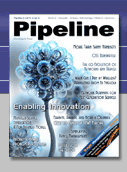
"The goal of Madeira is to provide novel technologies for Network Management Systems, enabling them to facilitate the provision of self managed services and networks in a world of increased network scale, heterogeneity and transience... to provide an innovative architectural framework, requisite interface protocols and/or standards and a reference software platform with prototypical implementations for a distributed network management system based on a non-hierarchical peer-to-peer paradigm... [in order] to scale to huge mesh networks, in terms of both the network topology and number of network elements managed."
The Madeira Platform was an architecture of component services that correspond to those usually included in autonomic self-* systems: containers, life-cycle, code distribution, security, notification, directory, persistence, naming, specification, monitoring/health, & policy. They add key additional services similar to those suggested by the 2001 TMForum FineGrain catalyst project implementation: visualization, connectivity and grouping. Central to their architecture was an Adaptive Management Component on board the device, locally serviced by utilities and information repositories.
Unfortunately there have been no postings to Celtic-Madeira web site since 2006 and their program was left incomplete. Hopefully these teams are continuing their work in another venue.
Where we depart from Celtic-Madeira is the insistence that all these services be on-board the autonomic device. Autonomic behavior can also be reached by having the device seek and find these utility services in the network group in which it participates. This is the approach first realized by the now open source Jini Network Architecture. It is also found in the concept of the service registry and realized in Microsoft's CSF.
These services are architectural building blocks, but they themselves do not guarantee an autonomic technical implementation. They must serve a broad concept that all devices interwork in multiple overlapping and/or orthogonal systems. Devices need to become semiautonomous artifacts, controlled by policy to react with adaptive behaviors, including and using well



